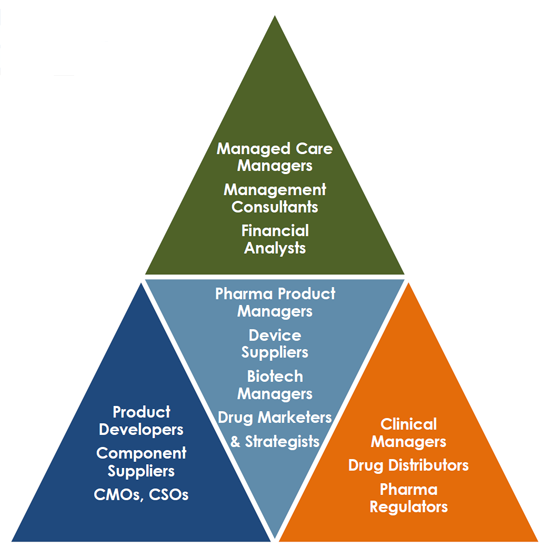 |
市场调查报告书
商品编码
1718481
即时照护和自我给药生物製药市场Point-of-Care and Self-Administered Biologicals - Technology, Therapeutics, Markets, &Forecasts |
||||||
这项新的市场研究 "即时照护和自我管理生物製剂市场" 对推动医疗保健产业这一不断发展的技术、产品和市场参与者进行了全面的评估和分析。
本研究旨在让製药决策者、药物输送开发者、设备设计师、新兴市场参与者和供应链利益相关者详细了解支持 POC 或自我给药的供应配置中的生物製剂的经济性、技术、疾病细分和机会。供应商组织的业务经理、医疗保健管理人员和投资者也可以从这项研究中受益。
针对慢性疾病的工程用
在治疗性抗体和候选药物激增的带动下,生物製剂在开发流程和临床试验方面继续超过所有其他 NCE。这种从小分子药物转向小分子药物的趋势为药物开发商、设备设计师、包装商以及最终的药物行销商创造了机会。
由于生物製剂通常针对慢性病,因此必须制定剂量策略和治疗方案以耐受长期使用,并且在许多情况下,供可能受到与其医疗状况直接相关的限制的患者自行给药。在未来五年内,随着药品开发商满足越来越多慢性病患者的需求,我们预计包装将加速从单剂量和多剂量小瓶向预充式註射器的转变。此外,抗体、荷尔蒙和其他生物製剂的强大生理效应增加了对安全性和依从性的需求。
报告价值矩阵

您将学到什么
- 哪些市场因素决定了即时诊断生物製剂市场?哪些因素将决定自主管理生物製剂市场?
- 药物开发组织内供应产品开发决策的关键推动因素是什么?
- 病人支持资源的可用性如何影响生物製剂的处方决策?
- 在 POC 市场领域,药物开发商和配方工程师之间的关係有多重要?自我管理市场部分又如何呢?
- 生物製剂在哪些治疗市场领域中参与竞争?您目前的市占率是多少?预期成长率是多少?
- 影响 POC 和自我管理生物製剂的选择标准的关键经济、技术和监管因素有哪些?
调查方法:
该研究方法以对市场影响者进行深入访谈的形式进行初步研究,其中包括关键市场参与者、技术开发商、分销商、行业专家、监管机构、贸易协会和材料标准机构。
根据行业期刊文章、技术文献、行业出版物、公司数据表和公开声明以及政府机构和行业协会的统计数据等二手资料来源对主要资讯进行评估和标准化。
使用标准建模和统计技术可以估计和预测市场需求和未来市场活动。
目录
生物製药的要素
- 指定容器
- 处方要素
- 生物学的药物输送生态系统
- 技术性要素
竞争情形
全球注射器具製造
- 北美
- 欧洲
- 亚洲
治疗用生技药品- 供给品市场区隔
- 照护现场
- 自我给药
主要的生技药品供应商的市场影响
药物类别分析
- 酵素
- 融合蛋白品质
- 颗粒细胞增生因子(G-CSF)
- 荷尔蒙
- 免疫调节药
- 单株抗体
- 重组蛋白品质
生物学的医药品简介
市场资料与预测
生物学的医药品的通知设备
This new market study, "Point-of-Care and Self-administered Biologicals" is a comprehensive evaluation and analysis of the technology, products and participants providing the driving force behind this evolving segment of the healthcare sector.
The study is designed to provide drug company decision makers, drug delivery developers, device designers, healthcare marketers, and supply chain participants with a detailed understanding of the economics, technologies, disease segments, and commercial opportunities for biological drugs with as supplied configurations that support POC administration or self-medication. Provider organization business managers, healthcare administrators and investors will also benefit from this study.
Engineered Therapeutics that Address Chronic Conditions
Led by the proliferation of antibody-based drugs and candidates, biological drugs as a class continue to outpace all other NCEs in development pipelines and clinical trials. This shift away from small molecule drugs is creating opportunities for drug developers, device designers, packagers and - ultimately - pharmaceutical marketers.
Because biological drugs most often target chronic conditions, dosing strategies and treatment protocols must be developed for long-term use, often for self-administration by patients who may have limitations directly related to their condition. The shift in as-supplied packaging from single and multi-use vials to prefilled injection devices will accelerate over the next five years as drug developers move to empower an increasing number of chronically ill patients. The powerful physiological effects of antibodies, hormones and other biological drugs also increase the need for safety and compliance.
Report Value Matrix

What You Will Learn:
- What are the market factors that define the point-of-care biologicals delivery market? What factors define the self-administration biologicals market?
- What are the major factors driving the As Supplied product development decisions within drug development organizations?
- How does the availability of patient support resources influence the prescribing decision for biological drugs?
- How important are drug developer-formulation technologist relationships in the POC market segment? In the self-administration market segment?
- In what therapeutic market segments do biologicals compete? What is their market share today? What is their expected growth rate?
- What are the significant economic, technology, and regulatory factors affecting the selection criteria for point-of-care and self-administered biological drugs?
Methodology:
Research methodology is based on primary research in the form of in-depth interviews with key market participants, technology developers, distributors, industry experts, and market influencers, a list that includes regulatory officials, industry trade groups, and materials standards organizations.
Primary data is evaluated and normalized against secondary sources including trade journal articles, technical literature, industry publications, company data sheets and published information, and statistical data from government agencies and trade associations.
Forecasts and projections of market demand and future market activity are derived using standard modeling and statistical techniques.
Table of Contents
Biological Drug Product Factors
- As-supplied Containers
- Formulation Factors
- Biological Drug Delivery Ecosystem
- Technology Factors
Competitive Landscape
Global Injection Device Manufacturing
- North America
- Europe
- Asia
Therapeutic Biologicals - As Supplied Segments
- Point of Care
- Self-administration
Market Presence of Leading Biologicals Suppliers
Drug Class Analysis
- Enzymes
- Fusion Proteins
- Granulocyte - Colony Stimulating Factor (G-CSF)
- Hormones
- Immune Modulators
- mAbs
- Recombinant Proteins










